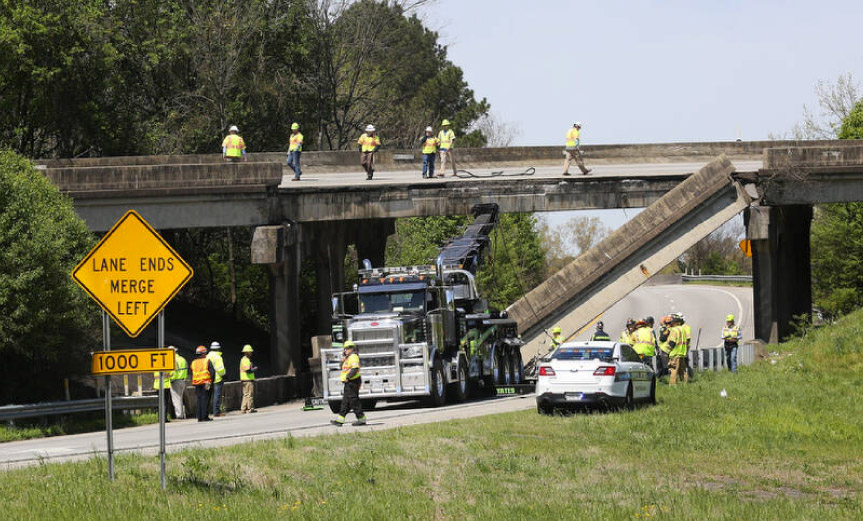Bridge hits cost millions of dollars each year
A bridge hit happens when a load is too large to fit under a structure, and part of the load strikes the bridge. A study of bridge hits in the last decade found that the average cost of a bridge strike is approximately $300,000 in infrastructure and property damage claims. When including the cost of route obstructions, injuries, fatalities and other losses, the cost of bridge strikes increases significantly.*
The one thing that all bridge hits have in common is that they are preventable.
States have regulations regarding permitting and pilot car requirements for Oversize Loads. These laws are there to ensure that carriers of Oversize Loads follow routes that can accommodate their size. Many states have online tools that help carriers and pilots plan routes before they even apply for a permit.
5 steps to preventing bridge hits:
Bridge hits can be prevented if Oversize Load carriers, drivers, and pilot car operators follow these steps:
- Know the load measurements. Oversize Load drivers and their teams should always make sure you know the exact dimensions of their specific load. Many bridge hits occur because of inaccurate load measurements—the load was higher, wider, or longer than the driver thought.
- Get the right permits. Carriers need to comply with the permitting process and other restrictions in the jurisdictions where they are operating. State, county, and local laws are there to keep loads, structures, and people safe.
- Plan ahead. Carriers should conduct thorough route surveys (if required) and/or pre-run their route, especially if their load is of extreme dimensions. Conditions on the road change quickly. A simple change such as repaving can change the clearance under a structure.
- Stay on route. Oversize Load drivers must never deviate from the permitted route. If you they need to go a different way, they should stop and request an alternate route from the permitting agency, and pre-run the alternate route before they go.
- Drive safely. Every member of the Oversize Load team must be alert and aware at all times. Their skills, knowledge, and attention mean the difference between a safe move and a costly incident.
Certification and training are central to prevention
Guiding an Oversize Load requires an advanced set of skills. Pilot/Escort Vehicle Operators (P/EVOs) need training to do this job safely. An increasing number of states are introducing certification requirements for P/EVOs, helping to ensure that they know how to guide Oversize Loads correctly and comply with the laws that regulate load movement.
Evergreen Safety Council’s P/EVO training and certification program is nationally recognized. Our curriculum covers the latest federal, state, and industry standards and goes in-depth on the advanced knowledge P/EVOs need to prevent bridge hits.
Bridge hits are preventable. By working together and complying with the law, we can save time, money, and lives.
*This data was compiled by Dan Wells, CDOT (ret.), in cooperation with other organizations, including Evergreen Safety Council. The numbers shown here represent only reported bridge strikes in a sampling of states. The actual number of bridge strikes nation-wide is in reality much higher, and the financial impact understated. There is a vital need for more comprehensive data on bridge strikes. We encourage state departments of transportation and law enforcement to consider enhanced data collection to better define the nature and magnitude of these incidents.
